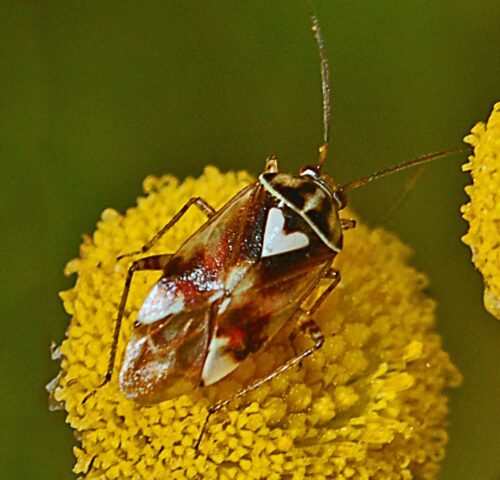Lygus pratensis is a species of plant bug belonging to the family Miridae. An adult bug is 3 to 6 millimeters in size and has widely varying colors: bugs can be green, brown or red.
Lygus pratensis (Lygus pratensis) is an insect from the family of capsid bugs or “mirid bugs” (Miridae). An adult bug is 3 to 6 millimeters in size and has widely varying colors: bugs can be green, brown or red. The pattern can also vary greatly. The triangular shield on the center of the back still makes the bug easily identifiable. The bug is flat and oval-shaped and has red eyes, as well as legs and proboscis.
Lygus pratensis can travel enormous distances and is therefore found in large parts of Europe and northern Africa, Asia, Siberia, and China. The bug is found mainly in forest edges, wooded banks and roadsides throughout Britain. Lygus pratensis feeds on plant sap and nectar. The adult insects hibernate in the leaf litter or under the bark.
Lygus pratensis is considered a pest because the insects suck plant juices especially from herbaceous plants.
The females lay the eggs in the plant tissue, damaging the plants. The tiny, round and white eggs are deposited in groups. The resulting nymphs resemble aph
Parasitoid wasps of the genus Peristenus are the natural enemies of Lygus pratensis: they actively search for nymphs to lay an egg in. The parasitoid wasp larva from the egg eats the nymph from the inside.
Where to find
- Compositae (Compositae)
- Stinging nettle (Urtica)
- Ox-eye daisy (Leucanthemum vulgare) – nectar
- Tansy (Tanacetum vulgare) – nectar
- Meadow buttercup (Ranunculus acris)
- Wild ra
dish (Raphanus raphanistrum) - Heather (Calluna vulgaris).
Control
In the vegetable plot and ornamental garden, Lygus pratensis is hardly a problem. This does not apply to (professional) greenhouse cultivation. In the greenhouse, these insects can be a real pest. The release of Peristenus parasitoid wasps (biological control) eliminates the infestation.
Prevention
Does not apply.

